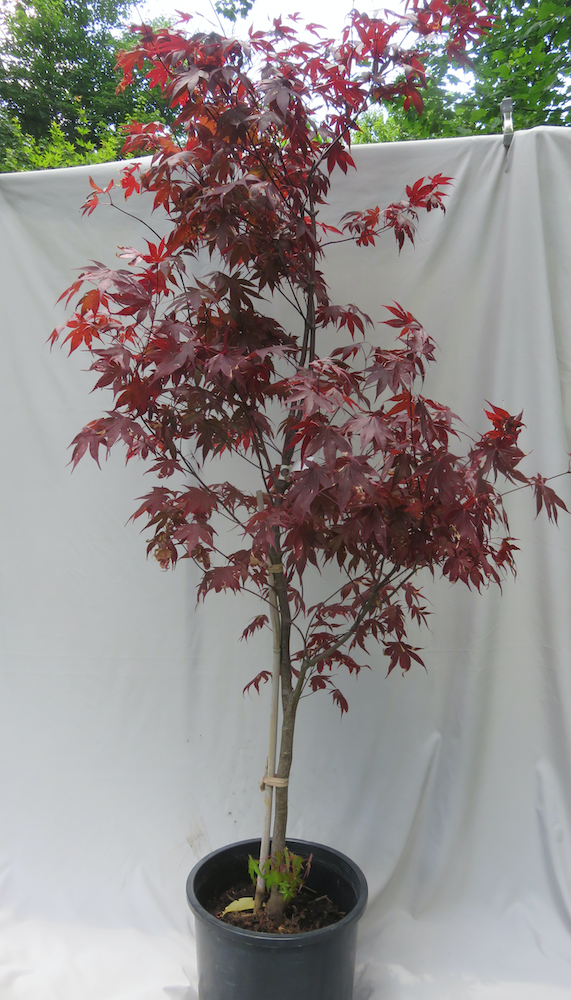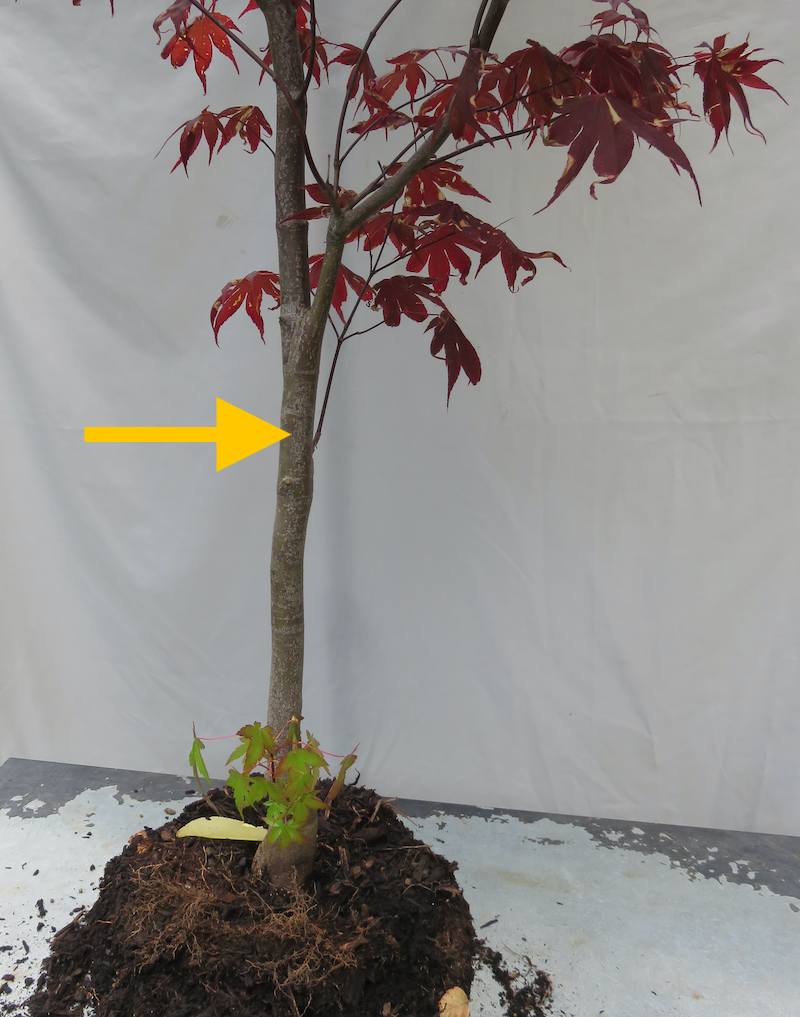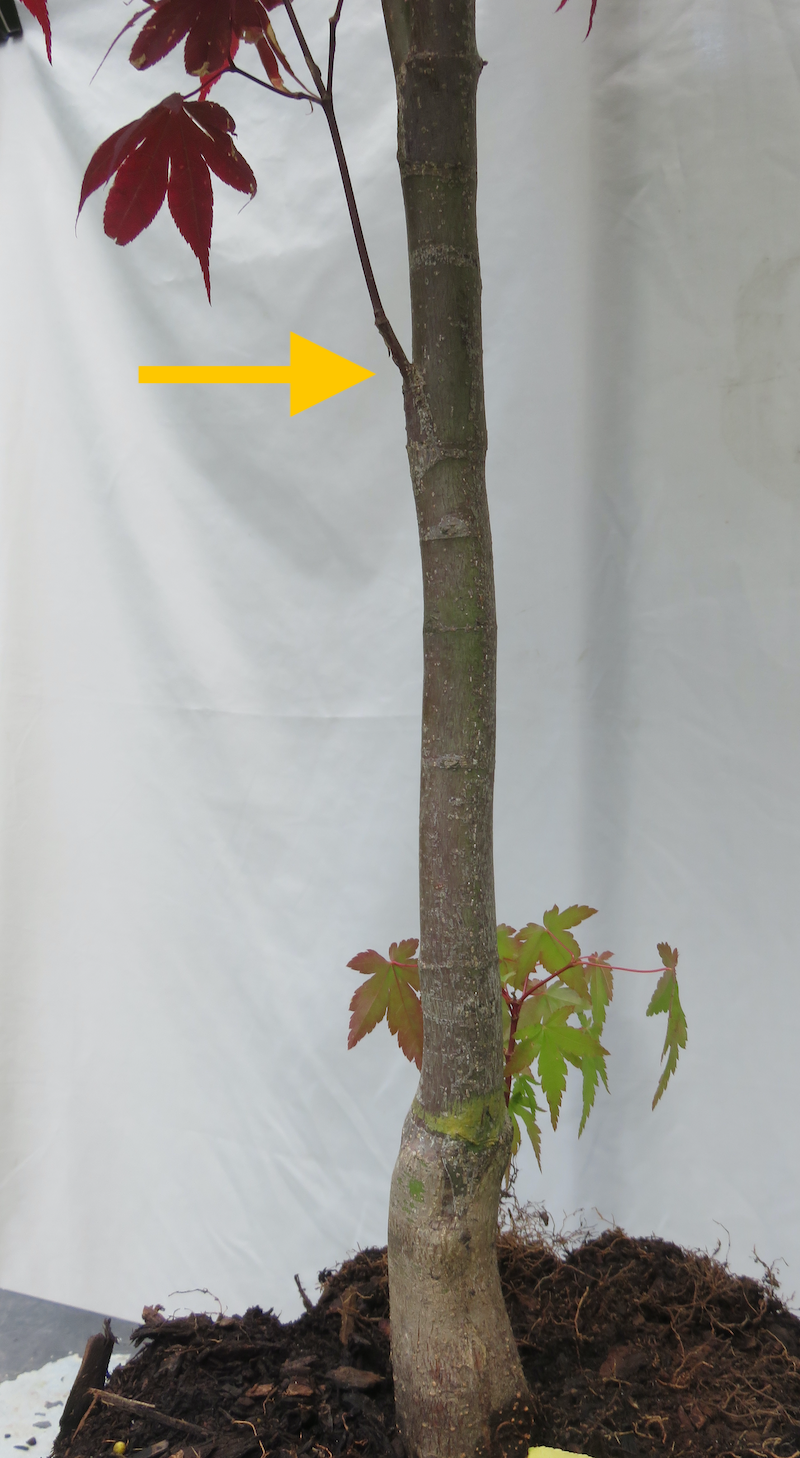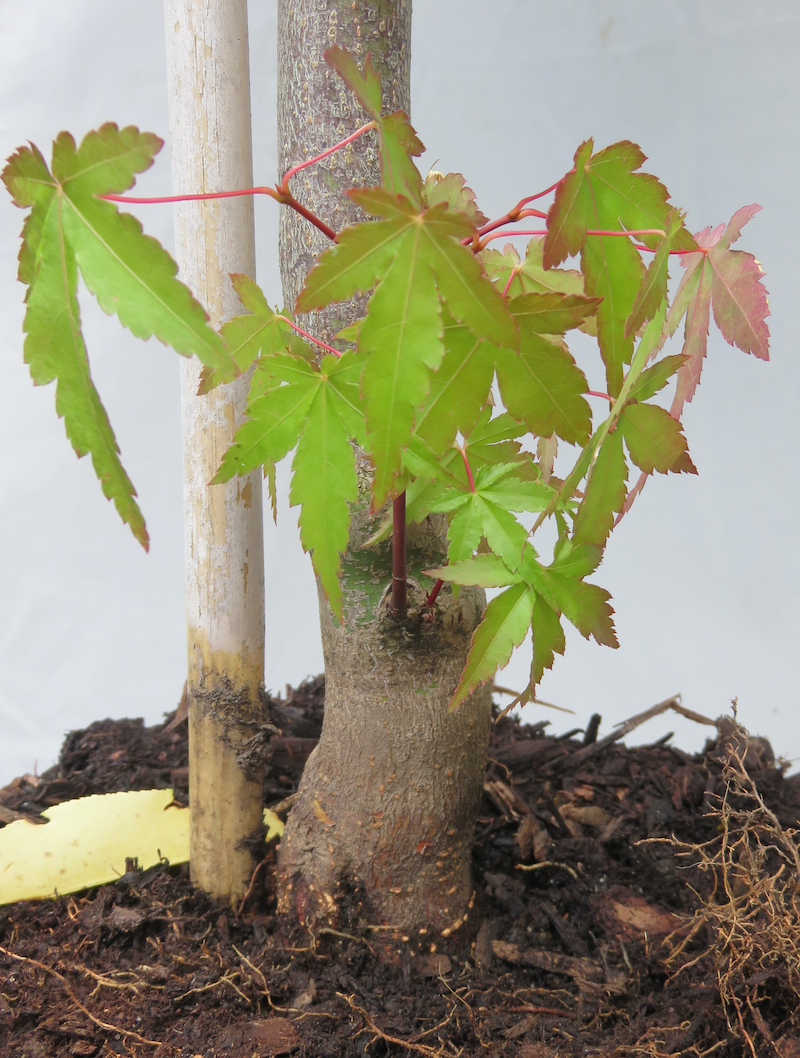Chapter 45 Journal Tree: A Japanese Maple, Bloodgood Cultivar
This tree is a good example of both some general and personal challenges. One of the general challenges is how to look past the overall mass of a tree and find the small part that could be an exceptional bonsai. This tree has some real potential that is easy to overlook. One of the challenges that I still struggle with is cutting trees back far enough that their height is proportional to the basal flare. This tree provides a good lesson on how radical pruning may be needed to uncover the bonsai tree hiding inside a larger stock tree.
45.1 First of June, 2021
I bought this Japanese maple (Acer palmatum ‘Bloodgood’) for $110 in a local home improvement store in early June. Despite being late in the season, the store was not yet marking trees down, so I was not shopping for stock trees that day. What caught my attention, and why I brought it despite it being relatively expensive for starting stock, will become clearer as we walk through it.
1.  2.
2. 
The first photo shows what the maple looked like at first glance. My background cloth is on a 6-foot high stand, so the canopy is about 6 feet high if you take away a foot for the pot and root ball. The second photo is a closer view of the canopy. The leaves are red-purple and typical size for a Bloodgood. Original photos by Dan Johnson.
I found three different candidate trees in this one starter piece. The most obvious option is to remove nearly the entire top, and regrow the lone small shoot as the new leader.
1.  2.
2.  3.
3.  4.
4. 
The first option is to prune the entire tree back to a single side branch and use that to generate a new leader. Image 1 shows the branch, and Image 2, the cut point. Image 3 shows the cut site from the other side. Image 4 is a close-up of a large unhealed break in the bark of the proposed leader. Original photos by Dan Johnson.
What concerns me is that the branch I want to turn into the new leader has a significant, un-healed wound. Personally I am unwilling to commit to making that side branch into a new leader until I see much stronger growth and, ideally, the wound closes over.
Option 2 is to go higher up in the tree to build the canopy. The trunk might seem too long given the width of the nebari, but I’ve seen a lot of Japanese maples with longer trunks than the traditional 6:1 height-to-width ratio. If managed well it does not look out of place.

The second option is to prune the leader branches back to smaller side branches to generate more branch taper. The arrows indicate where the first two cuts would need to be made. Original photos by Dan Johnson.
Option 2 would not remove as much of the existing foliage, and would result in a nice bunjin-inspired tree with an arched canopy of leaves reminiscent of an open Japanese parasol. While this would be attractive, it is not what I hope to do.
As I said above I often hesitate to cut trees back far enough. Not this time! The reason I brought this tree home is not because of the main foliage, but because of the clump of sucker leaves at the very base. That is Option 3, and the one I hope to develop.

This sucker sprout is not coming from the grafted Bloodgood scion, but rather from the rootstock. Original photos by Dan Johnson.
From talking to growers I know that most Japanese maples are grafted onto just a few types of rootstock. Big operations in Oregon tend to grow thousands of seedlings from the ‘Osakazuki’ and ‘Bloodgood’ cultivars, which both have vigorous root systems. Scion wood from named cultivars are then grafted onto these rootstocks. Smaller nurseries in this area either buy their rootstock from Oregon, or grow their own using seed from their own local trees. These local seed-origin rootstocks can have foliage that looks very different from the leaves produced by the grafted scion wood.
I have both Bloodgood and Osakazuki maples in my collection, so I know that their emerging leaves look nothing like the leaves on the sucker sprout. I am willing to bet that the grower (who is located in Charlotte, I learned from the grower’s tag) used their own seedlings as rootstock. Rather than cut off the sucker I plan to let it grow out until Spring 2022, then decide if I can build a much shorter tree from the rootstock, not the grafted tree above it. If that fails, I will have waited long enough to see if I can go with Option 1, or need to play it safe and use Option 2.
So what needs to be done right now?
1.  2.
2. 
The soil in the original pot is thoroughly decomposed (Image 1). There are some circling roots, but the tree does not seem severely root-bound (Image 2). Original photos by Dan Johnson.
The bark mix is well-decomposed and the tree looks like it needs some fresh mix. Given the time of year this tree is not going to grow much, so I moved it to a 7-gallon container with my standard mix. I also trimmed about half of the top out of the tree to encourage energy to go to the two small side shoots I hope to use. Other than that, June is simply too hot to be doing much more to a maple.
45.1.1 Next Steps
I will keep an eye out for problems, but I expect I will not do much more until early Spring 2022. By then I will be able to judge whether or not the root stock sucker can be built into a new tree, and whether the wound on the branch needed for Option 1 has healed.